Several months ago, I happened upon a photo of an antique dollhouse on Pinterest. I’d never been particularly interested in dollhouses, although my mother was (and still is) interested in miniatures while I was growing up.
That photo sparked my interest. The more I thought about it, the more I wanted, no NEEDED an old-fashioned-looking dollhouse that I could decorate for the holidays, especially Halloween and Christmas.
I looked online for ideas. I read about different dollhouse styles. I discovered that many people, much to my delight, would buy or build a dollhouse, keeping in mind a specific era in which to decorate it.
So, in essence, you could use your hobby to research a certain era in history and try to recreate it in your own little world? How awesome!
It happened that one day while at work, a coworker reminded me of a large, work-related box that I was expected to bring home that night, and instructed me to keep this in mind during our lunch hour, as the town we worked in was having its annual garage-sale event. Of course, I accepted the challenge and decided to stop at a couple of sales during our break.
For some reason, I was drawn to a particular road that I passed on occasion, and it so happened that the second sale I stopped at had exactly what I was looking for.


It was the last day of the sale, and everything was half off, including this not-quite-so-little gem. For $32, which was all the money I had on me, I acquired something that took up the whole back end of my vehicle, and a lot more of what little free time that I have.
My 6 year old daughter quickly took to filling it with toy dragons, puppies, and kitties.
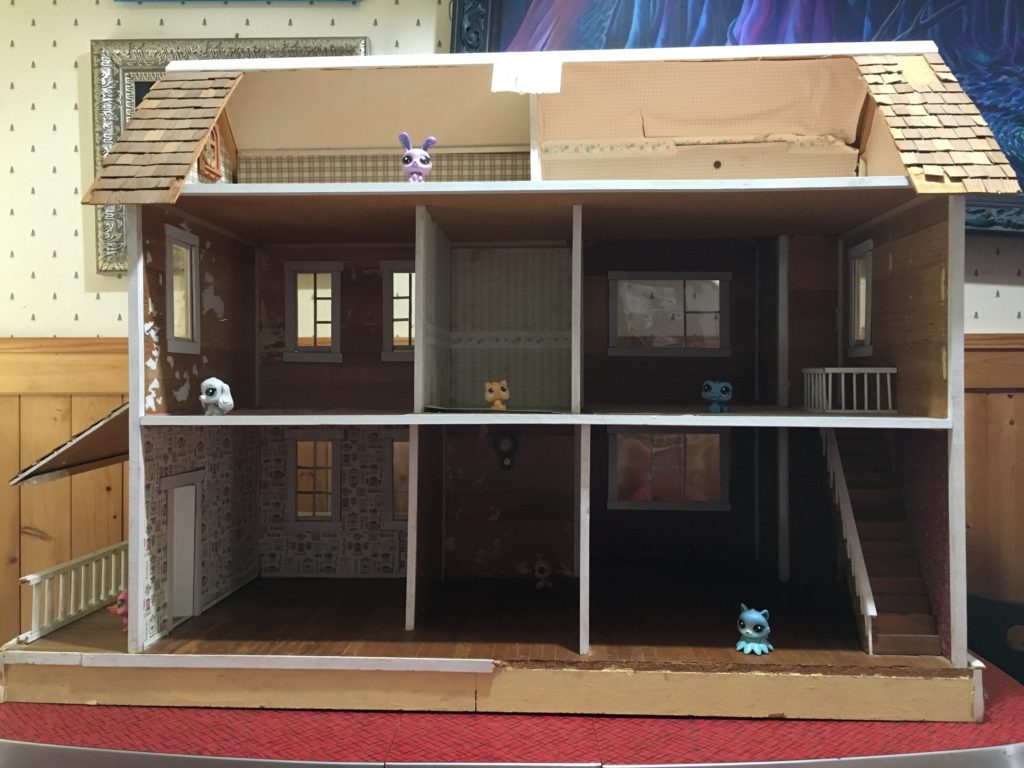
I’m still deciding on an exact time frame in which to decorate, but am leaning toward it being a rural farm that hasn’t quite gotten electricity, yet.
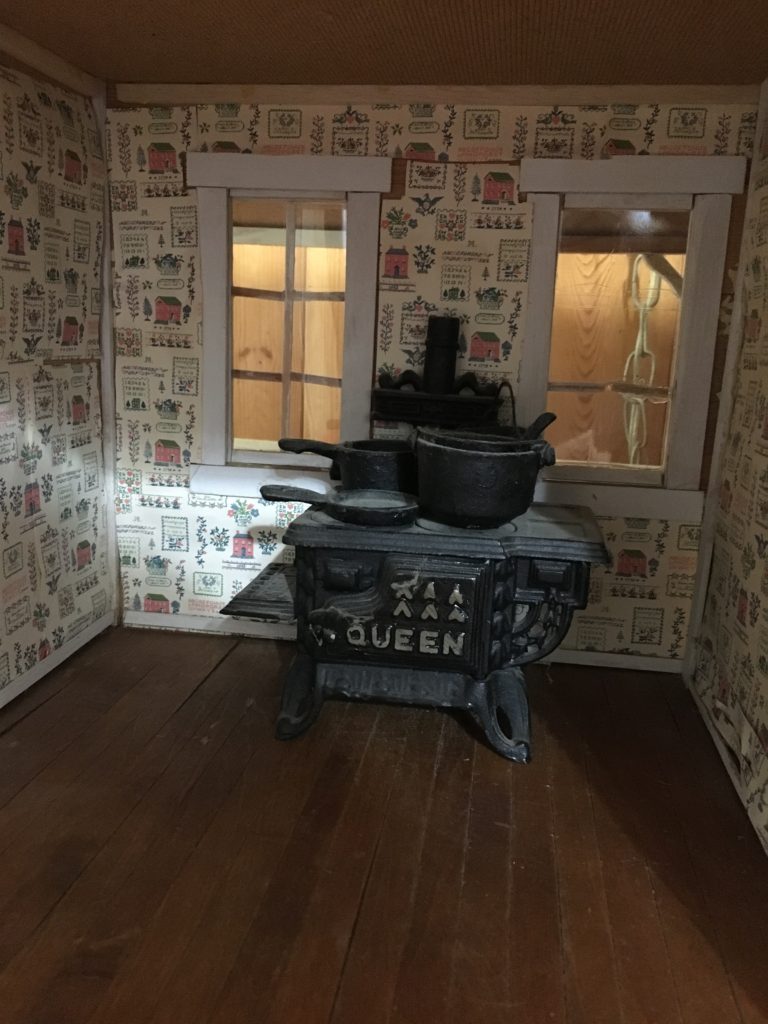
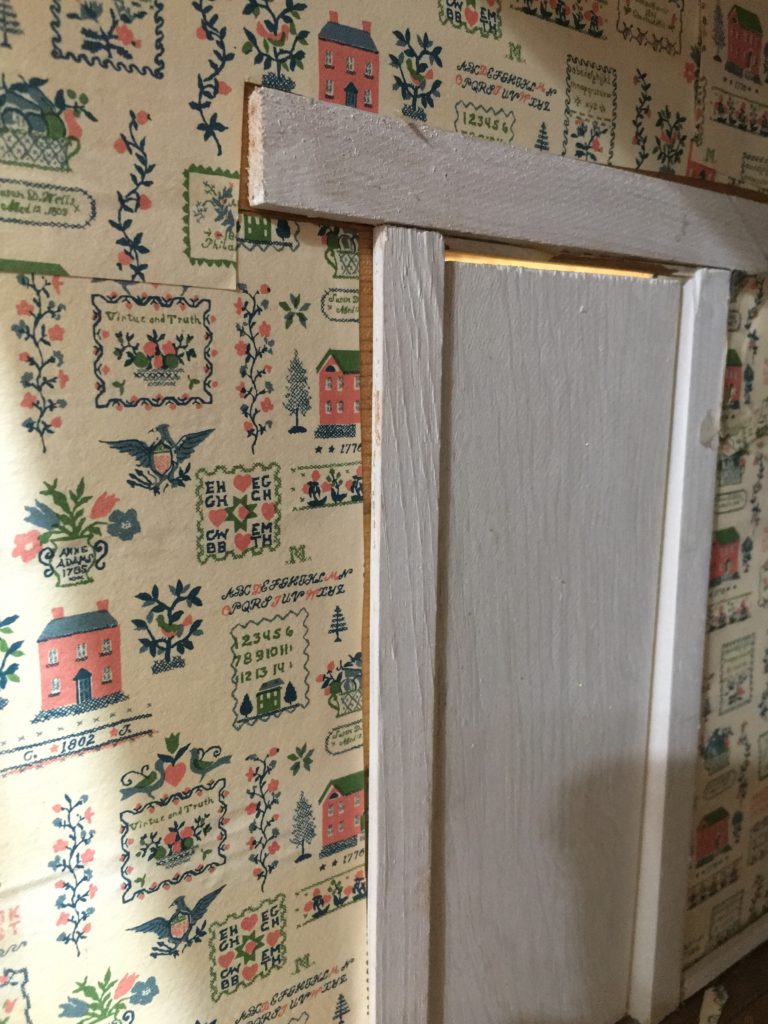
One of the first things I did was to rip out some of the old wallpaper that I didn’t like. It wasn’t too difficult to remove with a warm hair dryer, and a vinegar-wetted sponge for the more stubborn areas. As you can see in progress photos, I’m still not done with that task.
Bathroom Floor
I acquired, through Amazon, some mosaic tiles of real glass to use for my bathroom floor! I plan to order a few more sheets of them to add to the walls, also.
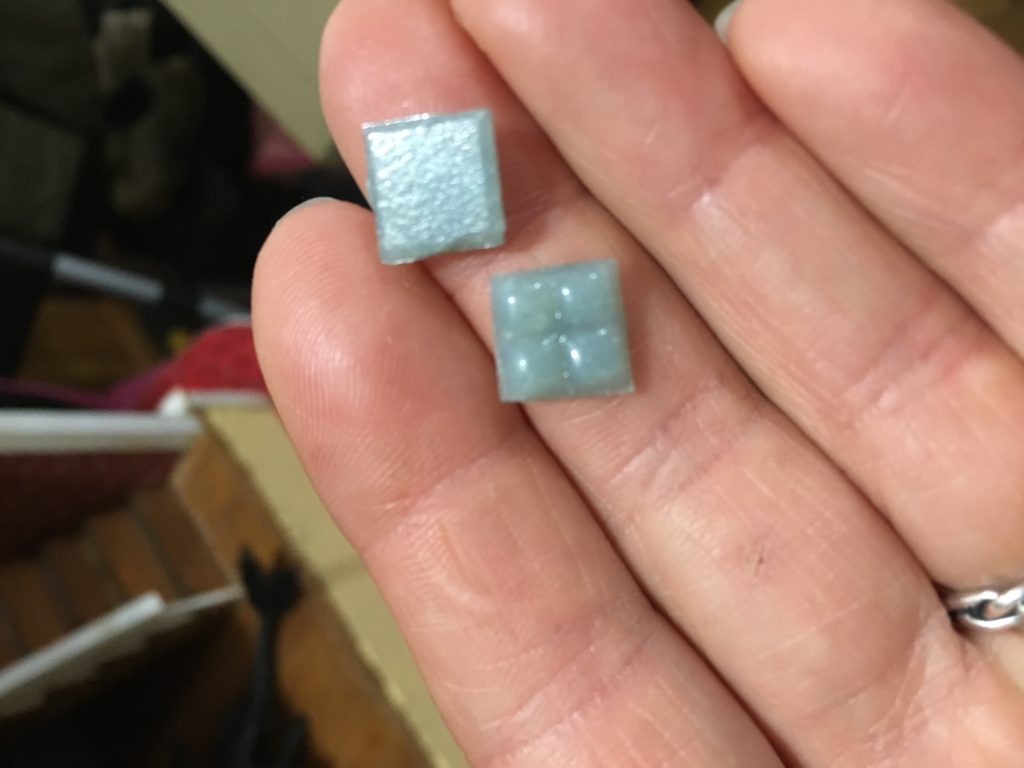
The individual glass tiles (ordered from Amazon.com, from seller Melody Jane) come mounted on a sheet of paper. You trim the paper to the size you want, and can also nip the tiles to fit. I didn’t need to nip them, fortunately for me, as they fit the space I needed perfectly. I then glued the tiles face down (so the paper side is up).
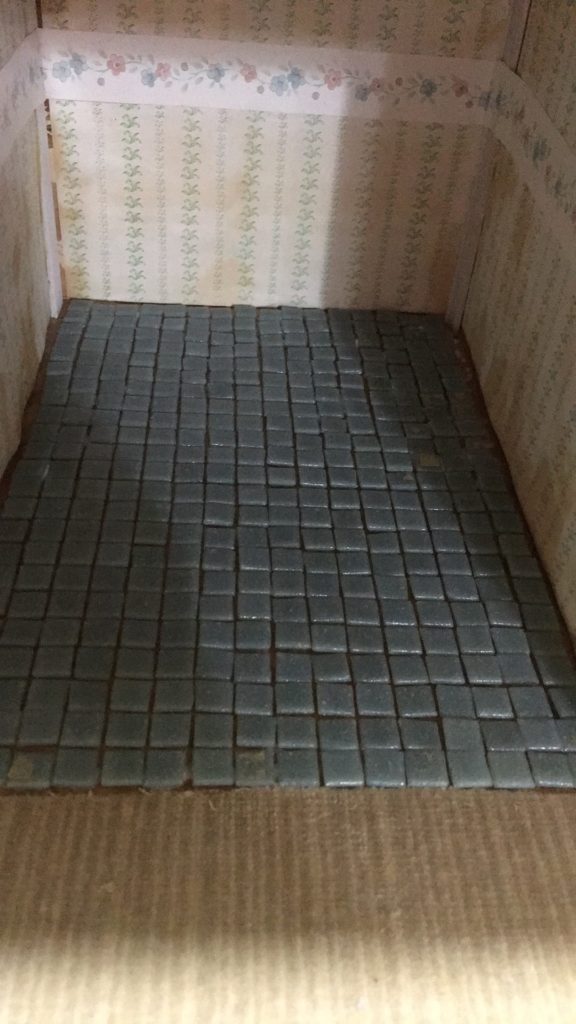
After the glue dries, you next use a wet sponge to break up and wash away the paper backing. Unfortunately for me, I didn’t glue my tiles well enough, and some popped off, so I had to also use this step to re-glue loose tiles.
After removing the paper backing and making sure all of the tiles were glued securely, I bought a tube of mosaic tile grout.
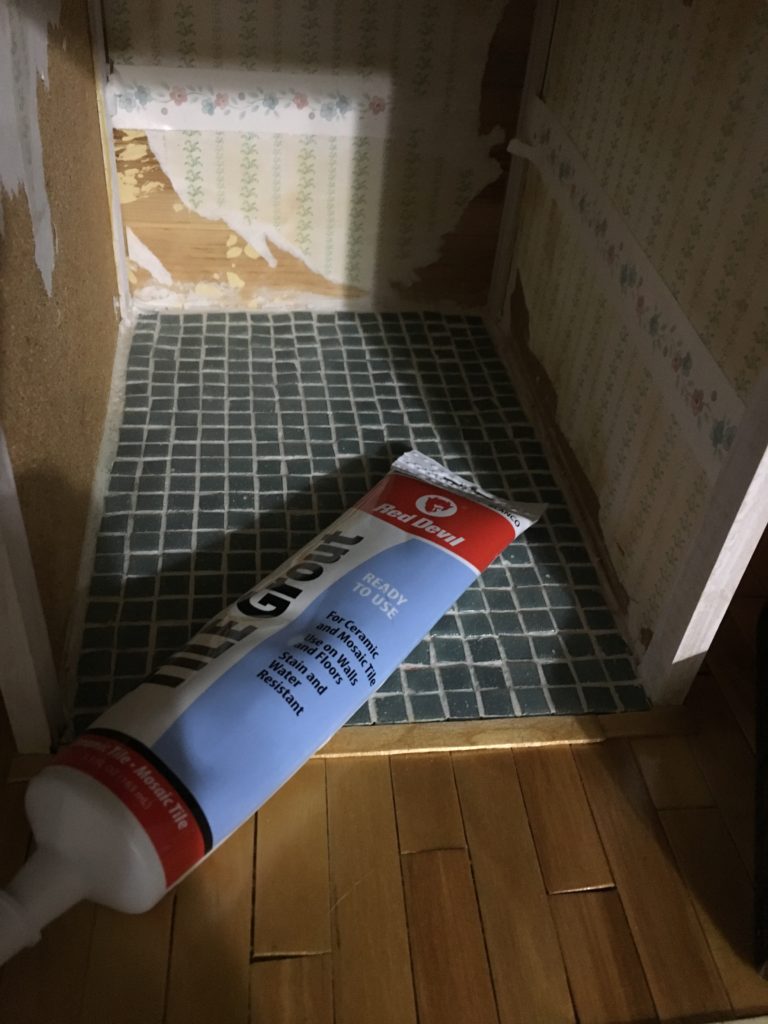
I followed the directions on the tube, and filled in the cracks between the tiles with white grout. It was easy-just cut the tip off the tube per directions, then gently squeeze out the paste along the cracks in the tiles. I used a small square of cardboard as a squeegee, pushing the grout deep into the cracks and smoothing it around the tiles. When I was sure that the cracks were filled, I used a damp sponge to gently wipe the wet grout from the tops of the tiles, without pressing so hard that it washed the grout out of the cracks. All in all, I am very pleased with the final result. I plan to eventually purchase more sheets of these tiles to use as backsplash on the walls and around where the tub will be.
Second Level Flooring
The flooring on the second level was pretty rough-outdated scraps of dingy carpet. I made quick work ripping that out. Leftover glue and/or material was easily removed with a damp sponge and vinegar in a spray bottle.
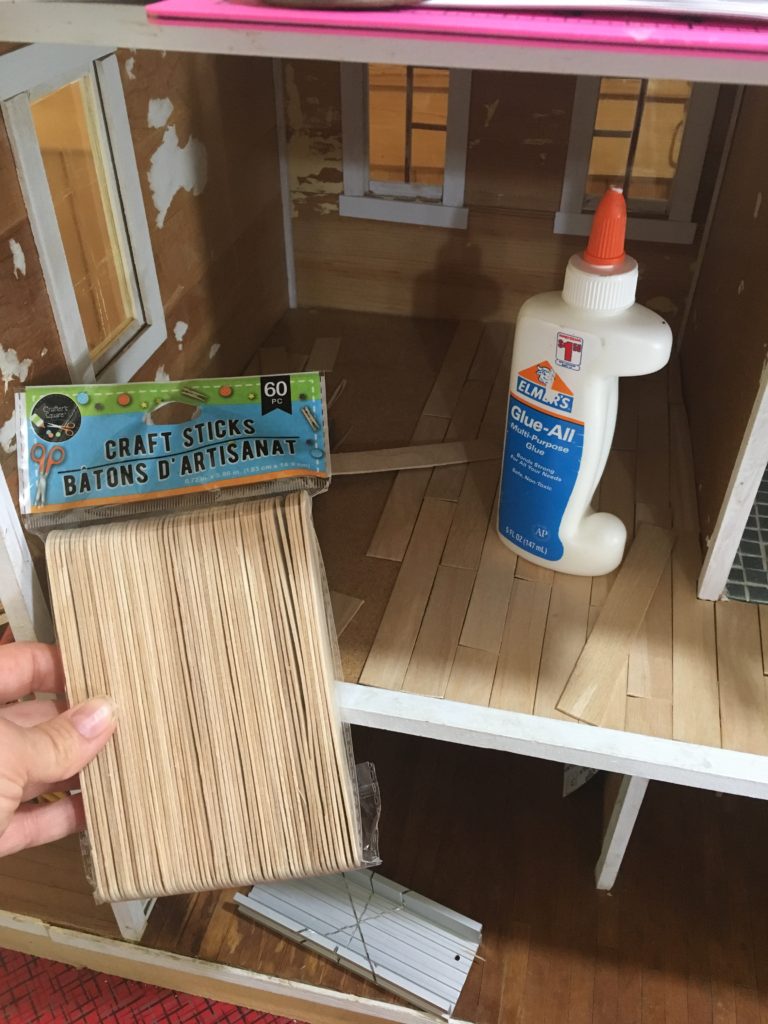
I decided on a pine plank look for these floors, as I have seen plenty of older homes with simple pine boards on the floors. To achieve this look, I found some jumbo craft sticks at the local Dollar Tree. I cut off the rounded ends using poultry shears, so they would be more board-like, and then staggered them across the floors to make the board ends more random. (Side note-a previous owner of our house installed the wood floor in our kitchen in such a way that the board ends are almost all lined up, and it looks awful. It’s really torture to an OCD person. Please, don’t do this to people).
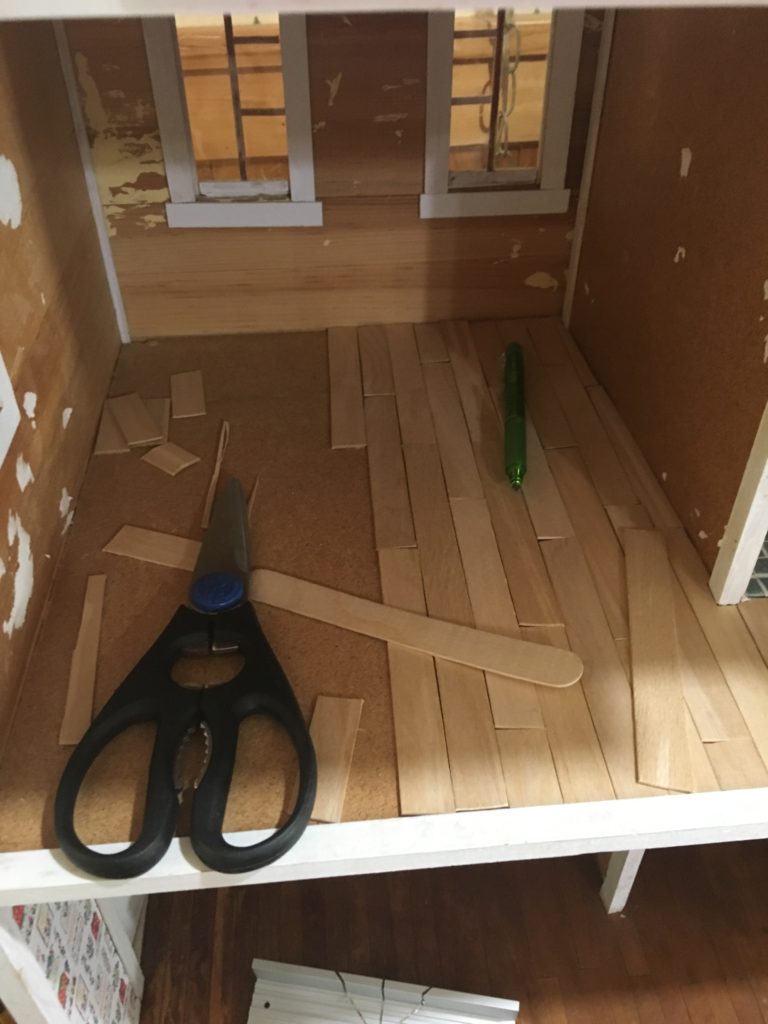
I used an xacto knife to cut the pieces to fit around doors and corners. I used elmer’s glue to glue all of the pieces down, and set heavy glassware on top of troublesome boards to keep them flat (I tried to avoid warped boards as much as possible).
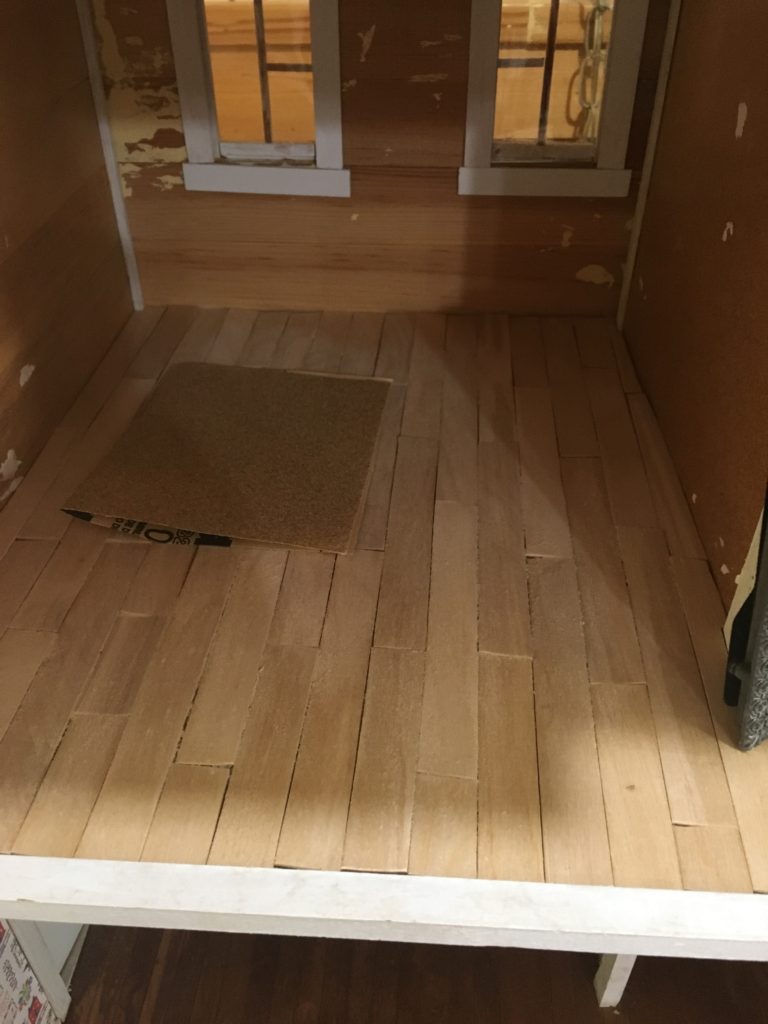
After the glue dried, i took some sandpaper and sanded with the grain of the wood, trying to level out rough edges and get a little sawdust into the cracks between boards.
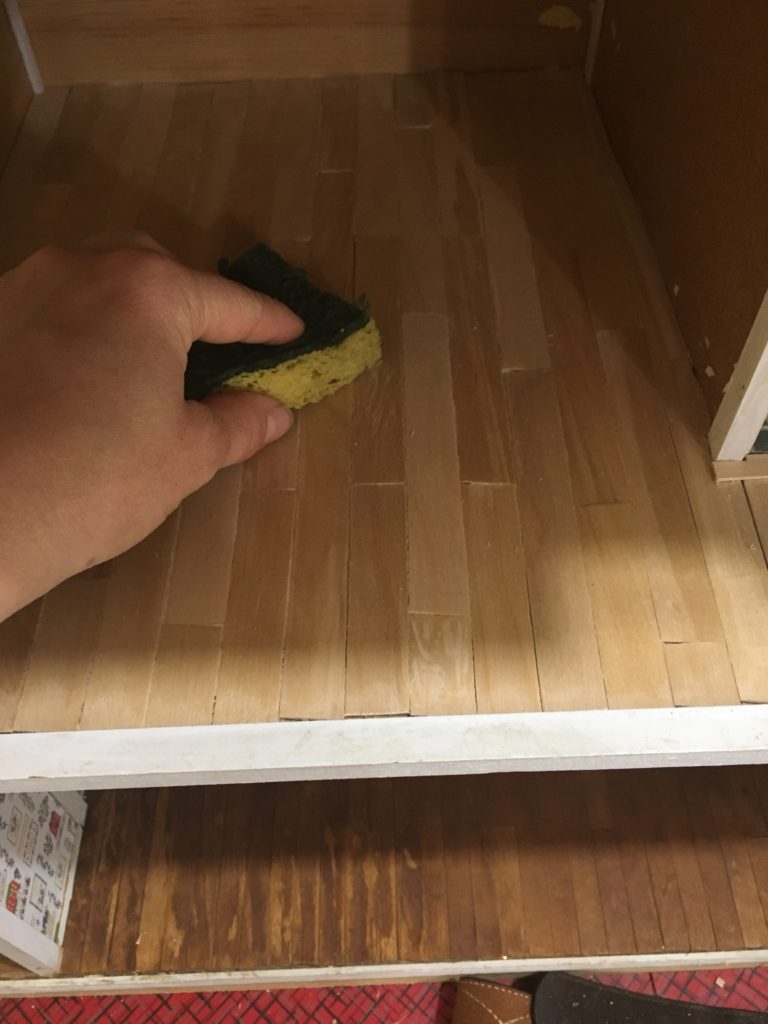
After sanding, I wiped the boards with a damp sponge to remove excess sawdust and prep the surface for varnishing. If you decide to use stain, now would be the time to do it, before varnishing.

I applied varnish according to instructions on the can- putting it on with a brush, letting it dry, sanding lightly (I used a torn piece of paper to sand, as it doesn’t take much), and then applying another coat. I applied several coats until I was satisfied. Now, my first-level flooring is jealous!
